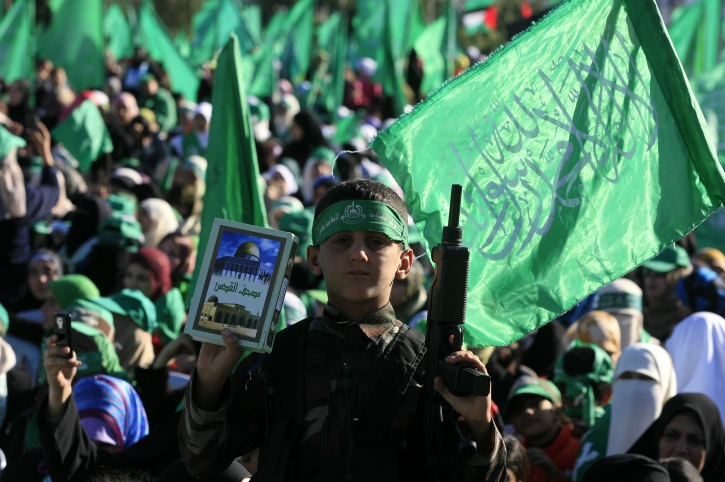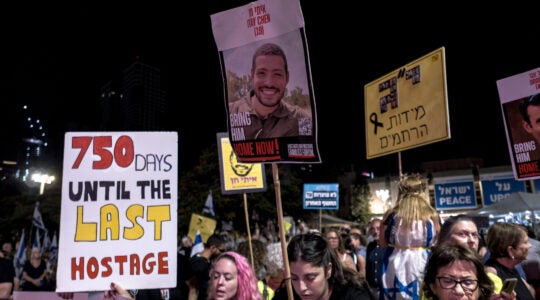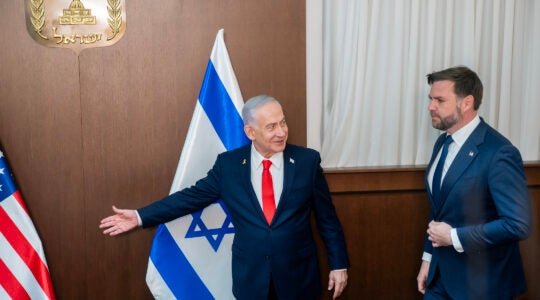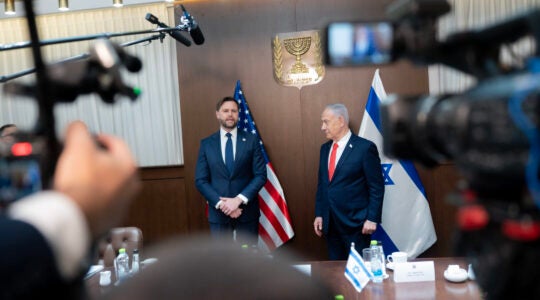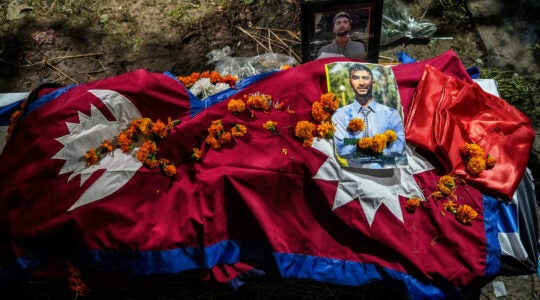JERUSALEM (JTA) — After two years of relative quiet since the Israel-Hamas war in Gaza, Israel’s southern border with Gaza is again becoming volatile.
Last week, Gazans fired a rocket into Israel that landed close to a kindergarten in a kibbutz near Ashkelon just as parents were dropping off their children. Although no one was hurt, nothing like that had happened since the war.
Militants fired more than 200 Grad missiles, Kassam rockets and mortar shells into Israeli territory in 2010, according to the Israel Defense Forces, compared to 160 in 2009. Both years pale in comparison to prewar levels in 2008, when militants in Gaza launched some 4,000 projectiles into Israel.
Nevertheless, despite the relative quiet for most of this year, the IDF is concerned that the recent escalation, if unchecked, could lead to a new round of serious fighting.
After last week’s attack in Ashkelon, the Israel Air Force bombed a staffed Hamas militia base, the first time it had taken such action in two years. Until then, the IDF had restricted its retaliatory and preemptive raids to targeting weapons caches, so-called workshops, smuggling tunnels and Hamas militants in the act of launching attacks. The IDF attacked the Hamas base to signal that Israel will hold the Hamas government responsible for what goes on in Gaza and that in allowing a bombing so close to a kindergarten, Hamas had crossed a dangerous red line.
But that didn’t quiet things down.
Last week, Gaza militants fired 24 mortar shells and three Kassam rockets at Israel, and Israel responded with air strikes that killed at least five militants.
Over the past few weeks, the militants also have stepped up ground attacks on Israeli border patrols. The most serious incident for Israel came in early December, when Gaza militants fired a state-of-the-art Kornet missile at an IDF Merkava tank. The Kornet, a lethally accurate and potentially game-changing anti-tank weapon that Hamas added to its arsenal only very recently, penetrated the Israeli tank’s armor but did not explode.
Hamas’ acquisition of Kornet weapons means that Israel will have to rethink its tactics if it launches another major ground incursion into Gaza. For now, tanks patrolling the border have been reinforced with the Israeli-developed “trophy” active protection system, which has the capacity to destroy incoming missiles.
The Hamas position on the escalation is ambivalent. The organization’s political wing says it has no interest in a major clash with Israel right now, but the military wing says it’s poised to resume large-scale rocket attacks.
At a rally in the Gaza city of Khan Yunis to mark the 23rd anniversary of the founding of Hamas – an event that coincided with the second anniversary of the Israel-Hamas war, called Operation Cast Lead – Mahmoud a-Zahar, one of the leaders of Hamas’ political wing, insisted that Hamas was committed to the ceasefire reached in the wake of Cast Lead.
But a day later, at a news conference called by Hamas, masked men from the Izz a-Din al-Qassam Brigades claimed to have new weapons that would surprise the IDF. They warned that they would respond harshly “to any acts of aggression by the occupying Zionist forces against its fighters or against the civilian population of Gaza.”
They also claimed responsibility for some past acts of terror, including the June 2008 attack on the Yeshivat Mercaz HaRav seminary in Jerusalem, in which eight yeshiva students were shot dead by a rampaging gunman. In a separate statement, Ahmed Ja’abari, deputy commander of Hamas’ military wing, declared that Israelis had two choices: death or expulsion.
Israeli analysts attribute the bellicose tone to competition between Hamas and other militias claiming to be doing more in the struggle against Israel. The tough talk is a way of saying that they, too, are fighting “the occupation.” On the other hand, the analysts say, Hamas’ political wing does not want to provoke another war, with all the hardship it would cause the population of Gaza and the threat it would pose to Hamas’ rearmament plans.
The upshot is that the Hamas government has been allowing its military and other smaller militias a slightly freer rein to test how much they can snipe at Israel without provoking a major military response.
Two years on, it seems that the record of the three-week war that began in Gaza on Dec. 27, 2008 achieved mixed results. The main aims of the operation were to restore deterrence, destroy as much of the Hamas terrorist infrastructure as possible, and prevent a renewal of weapons shipments into Gaza.
To a large extent, the operation achieved the first two goals, but the flow of weapons and war materiel into Gaza has continued unabated, perhaps even at an accelerated pace. The failure to stop the arms flow has threatened to undermine the operation’s other achievements. With new weapons and war materiel at its disposal, Hamas has been able to rebuild its military infrastructure and, now, the deterrent effects of Cast Lead appear to be beginning to wear off.
Hamas’ rearmament since the war has been impressive. The IDF believes that aside from the Kornet anti-tank missiles the terrorist group now has, Hamas also has anti-aircraft missiles. In addition, Hamas has more accurate and longer-range rockets – for example, the Iranian Fajr-5, which puts Tel Aviv in range.
Hamas fighters and other militiamen have received training in Iran, Syria and Lebanon, and from Iranian and Syrian instructors in Gaza. They have also been building Hezbollah-style underground bunkers in Gaza.
The IDF sees two aspects to these developments: On the one hand, Hamas will not want to put all this at risk by provoking Israeli prematurely. The IDF assessment is that Hamas is still very much in the throes of the rearming and rebuilding process. But a future showdown, when Hamas feels it is strong enough, cannot be ruled out.
“Two years after Operation Cast Lead, the situation in the Gaza Strip is different and calmer,” IDF Chief of Staff Lt.-Gen. Gabi Ashkenazi said at the Defense Ministry in Tel Aviv on Sunday. But the situation is still potentially explosive, he said. He warned that Israel would not tolerate the continuation of the kind of rocket and mortar fire its civilians have witnessed over the last few weeks. But he gave no indication that the IDF would go beyond the limited, carefully controlled responses it has made so far.
Clearly, both sides are wary of sparking a major conflagration right now. But things could escalate very rapidly if a Gaza rocket inflicts Israeli casualties, or if an Israeli counterattack were to take a heavy Palestinian toll.
“The IDF,” Ashkenazi said, “is preparing for any scenario.”
JTA has documented Jewish history in real-time for over a century. Keep our journalism strong by joining us in supporting independent, award-winning reporting.
